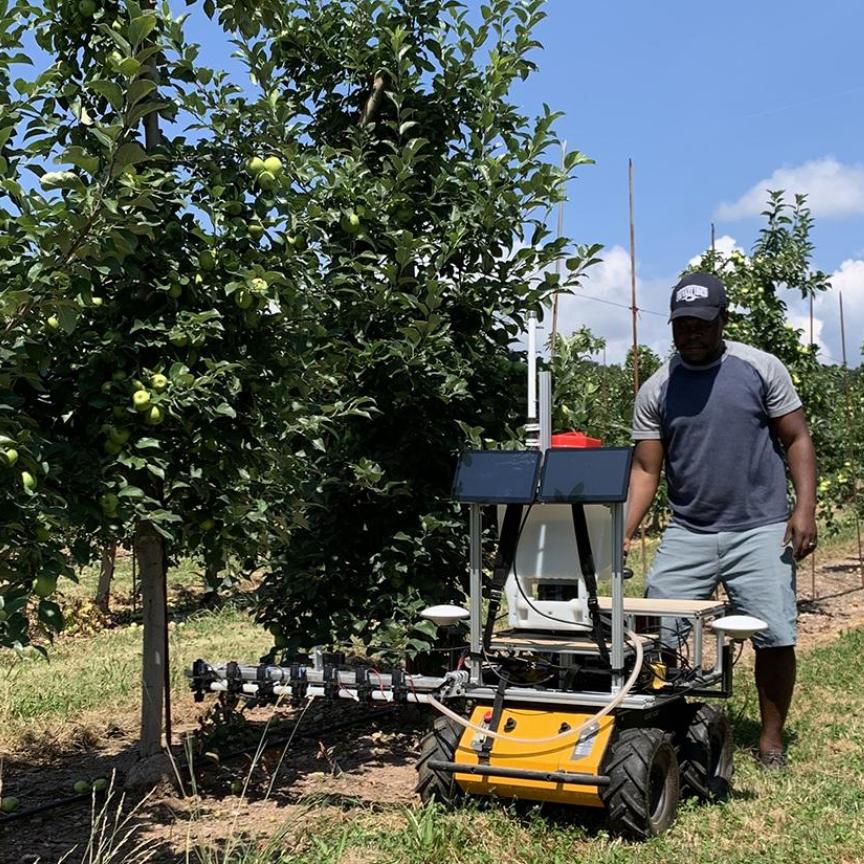The vision sector is changing rapidly, so how can firms thrive? Holly Cave speaks to some key vision suppliers
The machine vision industry witnessed record growth in 2021. As it grows and continues to mature, the vision sector is now a rapidly evolving landscape. Headlines report on the latest big mergers and acquisitions, but is conglomeration the only future for the sector?
Across the wider technology market, customers are typically far more aware of the variety of solutions and products available and are better able to assess which product meets their specific needs.
As Davide Ferrari, marketing communication manager for MaVis Imaging, a subsidiary of Framos, said: ‘They know what they want to achieve and are looking for technology partners to supply custom or semi-custom solutions.’
Expect consolidation
While the routes to market are not changing that much, it is evident that consolidation through mergers, acquisitions and closer partnerships is a key trend in the machine vision sector.
Market competition and commoditisation – in which technologies are becoming more commonplace, less differentiated and thus more closely price-matched – is a driving force for consolidation and the domination of larger players.
Machine vision companies of a certain size are acquiring smaller companies with complementary technology to build up portfolios in certain areas. The conglomerate Teledyne Technologies bought Flir Systems last year in a $7.36 billion deal. It also owns a large number of companies including e2v, Dalsa and Lumenera.
Such deals are likely to be the ongoing direction of travel, not only within the industry but also across the wider technology landscape, Ferrari suggested.
Zebra Technologies has moved into the market by buying up firms, most recently Matrox Imaging and, last year, Adaptive Vision. Another example is the chip maker Intel, which has already demonstrated its interest in the industrial 3D imaging market by building prosumer solutions that bridge the gap between personal consumers and a professional customer base.
‘Whether this type of move becomes an interesting return on investment for leading technology industries across the board is another question,’ added Ferrari.
Changing role for distributors
We are seeing manufacturers and distributors merge or team up, with the shared aim of reaching customers more easily and gaining greater insight into their needs. There is also a lot in this for customers, said Henning Tiarks, executive director, digital and software business management at Basler.
‘By combining the unique competency of former distributors in helping customers solve all kinds of vision-related tasks with more direct access to Basler, this move will allow us to increase the value for the customer significantly,' Tiarks said. 'And as their hardware and software needs become much more transparent, we can create better products.’
While companies such as Basler are buying their sales partners in other countries to develop direct routes to market – Basler bought its Italian sales partner Advanced Technologies and a stake in its French distributor i2S in May 2022, and its Beijing-based distributor in 2018 – standalone distributors in the current market are fighting to remain relevant. Is there still a place for them as standalone businesses?
Ferrari believes so, arguing that these companies have an important role as experts in managing expectations and delivery time frames within the image processing chain. ‘In the past, there was a strong demand for next-day delivery,’ he said. ‘But as a result of the global pandemic, customers are now actually forecasting their requirements and scheduling deliveries.’
Mark Radford, CEO of LMI Technologies, owned by the TKH Group, agrees that, with the increasing complexity and huge variety of products on the market, distributors are as important as ever. ‘Customers come to distribution partners to have their challenges understood,’ he said. While the space in most market segments or regions for purely reselling is rapidly shrinking, there is a sizable opportunity for distributors to provide value-added services to end-customers such as pre-sales support, application engineering, and integration with other digital and electro-mechanical systems.
MaVis has also seen the industry shift towards faceless ordering systems, typically through webshop sales. But its view is that, so far, this is slow to be successful in Europe.
Online purchasing may represent part of the larger desire from customers to reduce the complexity of their businesses, or simply take advantage of their ability to do so. Why make three transactions when you could make one? This may work out well for distributors, said Radford, thanks to their large line cards and capability to advise on interoperability. ‘Although it also speaks to the importance of machine vision brands producing broad portfolios with a wide variety of products,’ he added.
Space for innovation
Although consolidation seems certain to continue, market growth provides room for new ideas and the potential for brand new players in niche or highly specialised areas to enter the market.
Radford reflected: ‘This yields an interesting mix of greater acceptance of machine vision through the brand power of the larger, well-known players in the market, while innovation and new entrants force the evolution of products and services in a highly competitive market.’

Credit: Golden Dayz/shutterstock.com
Artificial intelligence, embedded processing, Internet of Things and cloud computing technologies have extensive potential for delivering innovation and breakthrough solutions. Tiarks is convinced that these technologies will change the way machine vision products are built and will have implications on the technologies used to create machines in the future.
‘All current machine vision companies need to master this in the coming years by deploying new technologies – be it from big technology firms or not – directly to the customer base,’ Tiarks said. ‘They should adapt to new business models and define a certain, mostly new, role in the value chain toward the customer. As a result, these companies will be sustainable and benefit from the changes in the market.’
Ferrari is less sure of the scope for the impact of innovation in these fields: ‘Many applications still require very specific results from strictly defined inspection parameters, and so traditional image processing will still account for the major volume of applications,’ he said. ‘AI will help increase food and agri-tech applications though, with important implications for reducing the environmental impact of food production.’
Offering fuller solutions
The market is moving towards more integrated imaging solutions that place machine vision into wider factory processes – integrating robots, machinery and people to collaborate. ‘This is leading companies to diversify outside of their traditional technology sphere and take control of more aspects of image processing in the complete automation solution,’ said Ferrari.
Many companies in the machine vision sector are using their application and technical knowledge to specify, design, produce or select additional components that complement or expand their traditional product range.
Basler, for example, has been expanding from a camera manufacturer to a full-range supplier in the past few years. It now supplies a range of hardware components, including lenses, cables, interface cards and frame grabbers.
TKH now holds several companies under its TKH Vision umbrella brand, including Allied Vision, Chromasens, LMI Technologies, Mikrotron, Net, SVS-Vistek and Tattile. In 2021, it exhibited all those brands under a single exhibition booth at Vision Stuttgart for the first time. Individually, these companies have long histories within the machine vision market and, together, boast a broad array of technology components, technical expertise and application know-how in both the 2D and 3D spaces.
Backing up hardware with software
What is particularly interesting is that TKH Vision is building on its strong hardware product portfolio by putting an increased focus on the group’s software offerings. ‘We’re creating unique smart and integrated plug-and-play systems to fully round out an entire one-stop-shop of solutions for customers, fully leveraging the group's expertise,’ explained Radford.
TKH Vision hopes that this combination of hardware, software and application expertise will make them the go-to supplier for machine vision solutions across a variety of industries and applications.
Basler is also developing its software platform with its Pylon camera software suite – a single tool designed to unify and synchronise the control and operation of all its hardware components. Functionality includes an integrated light-controller, the latest image analysis and processing tools, and harmonised CXP-12 cards and cameras. The interface and its integrated drivers are free to use until the design phase is done, explained Tiarks. ‘It can be downloaded and immediately used by everyone to create a vision system,’ he said.
The approach demonstrates how expanding into software brings benefits for hardware manufacturers. As well as offering a useful tool for Basler customers, the platform encourages them to access the webshop and drives them to guidance on the website, where they can be introduced to components and products they might consider purchasing.
The trends in business strategy happening across the sector look set to continue. While it is clear that there is significant space for innovation, consolidation means that, in future, there is likely to be a handful of companies with wide portfolios across both hardware and software, which offer a ‘one-stop shopping experience for customers’, said Tiarks.


